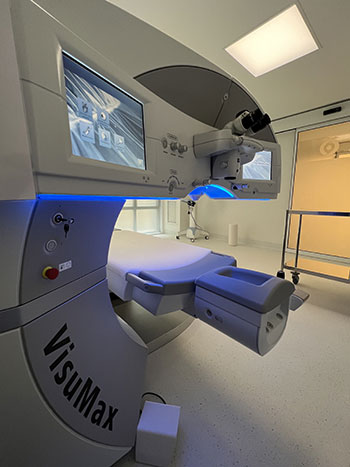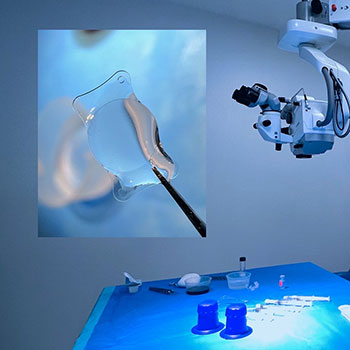What causes presbyopia?
Your clear lens sits inside the eye behind your iris. It changes shape to focus light onto the retina so you can see. When you are young, the lens is soft and flexible, easily changing shape. This lets you focus on objects both close-up and far away. After age 40, the lens gradually thickens and loses its flexibility. It cannot change shape as easily. This makes it harder to read, thread a needle, or do other close-up tasks.
How does presbyopia progress?
Just like your body, your eyes and vision change over time. From the age of 45 until the age of 60, presbyopia gradually progresses. You may notice that you need to change your eyeglass or contact lens prescriptions more frequently than you used to. Around age 60, these changes in near vision should stop, and prescription changes should occur less frequently.
What are the complications of presbyopia?
Strictly speaking, there are no complications in presbyopia. But with their vision deteriorating gradually, some people change their lifestyle over time. Without a treatment, patients with presbyopia will develop problems maintaining their usual levels of activity or productivity at work. Some of them will stop doing activities they used to love (reading, crossword puzzles, sewing and knitting…). When tasks such as reading small print (such as medication leaflets, for example) become difficult, it can also be dangerous.
How to regain clear near vision?
People with presbyopia have several options to regain clear near vision. They include:
- Eyeglasses, including reading glasses, bifocals, and progressive lenses.
- Contact lenses, including monovision and multifocal lenses.
- Laser surgery and other refractive surgery procedures for those who don’t want to wear glasses or lenses any more.
When should you have presbyopia surgery?
Presbyopia is not a disease and there’s no emergency in having a surgery. See an eye doctor if blurry close-up vision is keeping you from reading, doing close-up work or enjoying other normal activities. He can determine whether you have presbyopia and advise you of your options. Some people live with presbyopia and are happy with it. It is your choice.
Are there different surgical techniques to treat presbyopia?
We are experts in the treatment of presbyopia. Come to the Bellecour Vision Clinic to benefit from highly specialized techniques that can correct your presbyopia in a complete and lasting way. We can treat your presbyopia regardless of its severity. Unlike other visual defects, presbyopia reaches the same degree for all individuals. We can, therefore, anticipate the right level of care to treat your presbyopia. The result of the operation is lasting; no further operations are necessary. Several methods can correct presbyopia along with other visual defects in a single procedure.
For example:
- Presbyopia alone Presbyopia + myopia (including very severe cases)
- Presbyopia + myopia + astigmatism (including very severe cases)
- Presbyopia + astigmatism Presbyopia + hyperopia
- Presbyopia + hyperopia + astigmatism
During your consultation, we will evaluate the best solution for you and guide you through the process. We will propose you laser surgery or implants.

